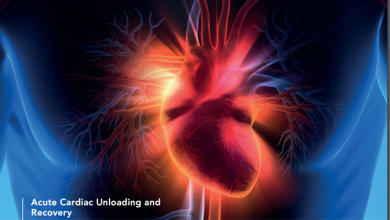Search results
Author(s):
Colm Hanratty
,
Simon J Walsh
Added:
3 years ago
Chronic total occlusions (CTO) are a common finding at angiography in patients with coronary artery disease (CAD); they are present in ~20% of cases at angiography (excluding those with acute MI or prior coronary artery bypass graft (CABG).1 Data from the same Canadian registry showed that only 10% of CTO patients had had a percutaneous coronary intervention (PCI) attempted to treat CTO, with…
View more
Author(s):
Mohammed Imran Ghare
,
Alexandra Lansky
Added:
3 years ago
Transcatheter aortic valve replacement (TAVR) is an innovative treatment modality for patients with severe symptomatic aortic stenosis (AS). After gaining initial market approval in Europe in 2007 and 4 years later in the US, TAVR continues to make large strides. An estimated 340,000 TAVR procedures have been completed in Europe in the immediate 5 years after approval and a further 10,000…
View more
Author(s):
Inga Narbute
,
Sanda Jegere
,
Indulis Kumsars
,
et al
Added:
3 years ago
Coronary bifurcation disease is present in up to 15–20 % of lesions undergoing percutaneous coronary intervention (PCI) and remains one of the outstanding challenges of treatment with PCI.1,2 PCI for coronary bifurcations is associated with more procedural complications and higher restenosis and adverse event rates than lesions in the body of the vessel.3–7 The introduction of drug-eluting stents…
View more
Author(s):
Inga Narbute
,
Sanda Jegere
,
Indulis Kumsars
,
et al
Added:
3 years ago
Abstract
Together with calcified lesions, saphenous vein grafts, chronic total occlusions and unprotected left main lesions, bifurcation lesions are complex lesions that remain among the outstanding challenges of treatment with percutaneous coronary intervention. Bifurcation lesions are associated with increased rates of procedural complications, restenosis and adverse events than lesions in the…
View more
Author(s):
Colm Hanratty
,
Simon J Walsh
Added:
3 years ago
In the review by Johannes Rigger, Colm G. Hanratty and Simon J Walsh entitled ‘Common and Uncommon CTO Complications’ (Citation: International Cardiology Review 2018;13(3):121–5. DOI: https://doi.org/10.15420/icr.2018.10.2), the following corrections should be made:
The second sentence of the abstract on page 121 should read ‘Due to the complexity of the procedures, there is an increased…
View more
Author(s):
Fabrizio Fanelli
,
Emanuele Boatta
,
Pierleone Lucatelli
,
et al
Added:
3 years ago
Stroke is the third leading cause of death and permanent disability in the US and Europe. It is estimated that there are over 700,000 new cases of stroke each year in the US, of which 20–30% are thought to be secondary to carotid thromboembolic disease.1 In the last few years, carotid artery stenting (CAS) has significantly expanded as an alternative treatment to the conventional surgical carotid…
View more
Advances in New Stent Designs without a Permanent Polymer May Solve Polymer-related Complications
Author(s):
Chourmouzios A Arampatzi
,
Raul Moreno
,
Giuseppe Sangiorgi
Added:
3 years ago
Article
Author(s):
C Vandenbriele
,
J Wilson
,
A Baker
,
et al
Added:
4 years ago
Author(s):
Liesa Castro
,
Svante Zipfel
,
Samer Hakmi
,
et al
Added:
4 years ago
Author(s):
Steven V Manoukian
,
Michele D Voeltz
,
Frederick Feit
Added:
3 years ago
Non-ST-segment elevation (NSTE) acute coronary syndromes (ACS) include unstable angina (UA) and NSTE myocardial infarction (NSTEMI), and account for one and a half million hospitalisations in the US annually. Patients with ACS are typically managed by initial medical stabilisation followed by an early invasive approach, whereby cardiac catheterisation is performed, usually within 24 hours of…
View more











